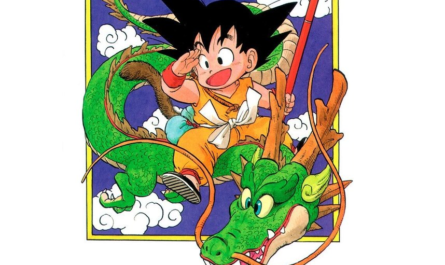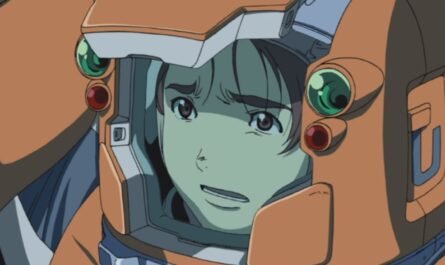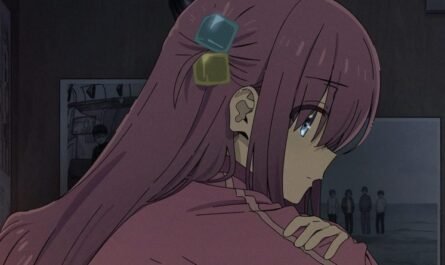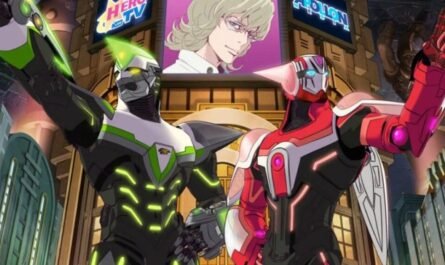“Anime Studio Chronicle” is a series in which we ask the presidents and staff of anime production companies to talk about their company’s history and the works they have produced so far. In today’s anime industry, crowded with many production companies, what was the intention behind each company’s creation, and how did they hone their uniqueness? We will explore each company’s individuality, strengths, and characteristics by asking people who represent companies to reflect on their history and experiences.
The person who appeared in the 13th episode was Pierrot’s Michiyuki Honma. Mr. Honma, who joined Pierrot during its founding period and has worked on numerous Jump anime, is looking at the future of the anime industry.
Interview and text: Harunoto Photography: Masakazu Takeda
The founding period was full of energy for creating new things.
Its first president, Yuji Fukawa, established Pierrot as an independent company from Tatsunoko Productions in 1979, four years before Mr. Honma joined the company.
“Funokawa passed away the year before last, but I had often heard stories from the time of his founding. This is a coincidence, but Fukawa is from Sakata City, Yamagata Prefecture, and I am from Tsuruoka City, Yamagata Prefecture. We both came from the Shonai region. He was an active art club member at Sakata Commercial High School.
He came to Tokyo to pursue a creative career and, for some reason, joined a mannequin company (lol). He started working as an animator at Tatsunoko Productions, where he created the “Gatchaman” and “Time Bokan” series, but decided to set up his studio in a small apartment in Kichijoji to create a production company with a high level of creative ability. It seems that it started from
Pierrot’s first work, “Nils’s Mysterious Journey,” began broadcasting in 1980. 1981, she released a series of hit works, including the manga-based “Urusei Yatsura” and the original “Creamy Mami, the Magic Angel” in 1983. What is the reason for creating original works early, not just works with original works?
“Funokawa made videos and thought about how to monetize them. To do that, it was necessary to own the rights to the works firmly, and original works were more convenient. Since then, model cases have been. For various reasons, Disney owns the rights to popular characters, makes videos of them, and commercializes them. Tatsunoko Productions also creates original works, so it is natural that Nunokawa, who was at the company, would develop this idea. Right.
However, “Urusei Yatsura” quickly became a huge hit. I’m sure Fukawa thought, “I guess it’s okay to work with an original work” (lol). From there, the weight of the original work gradually increased. But it was great for Pierrot to be able to start with those two wheels. While being successful in business, I was also able to take on the challenge of creating something different every year as part of the “Magical Girl” series.”
In 1983, Mr. Honma joined Pierrot, which continued to produce hit works. What did this up-and-coming studio look like to him at the time?
“When I joined the company, the company had moved to a dirty prefabricated building in Koganei. At that time, there were about 25 people in the whole company, and about 15 people were involved in production.
At that time, it was the year before “Urusei Yatsura 2 Beautiful Dreamer” was released, and Oshii I was overwhelmed by seeing creators whom I would call “gods” working closely, including director Mamoru, screenwriter Kazunori Ito and character designer Akemi Takada. Meanwhile, the world’s first OVA, “Daros”, had also begun production.
Large production companies were nearby, such as Toei Animation (currently Toei Animation), Tokyo Movie (currently TMS Entertainment), and Japan Sunrise (currently Bandai Namco Film Works). Still, to compete on an equal footing with these significant production companies, the company, although poor, was full of energy and a desire to try new things.
The origins of the Jump anime that continued to support Pierrot
As Mr. Honma mentioned earlier, Pierrot has been working on many works with original works since the late 1980s. Among them, the series of Weekly Shonen Jump serialized anime series such as “Yu Yu Hakusho” in the 1990s and “Hikaru no Go,” “NARUTO,” and “BLEACH” in the 2000s were a turning point for Pierrot.
“Because it coincided with the time when video platforms were becoming more widespread, “Yu Yu Hakusho” was not only broadcast but also became popular on media such as LD-BOX and VHS. In addition, it was also popular in consumer games such as Mega Drive and Super Famicom.
Also, “NARUTO” and “BLEACH” were broadcast when demand for Japanese anime increased overseas, and our company’s Jump anime became a big hit in the anime industry. It became a big hit just as Pierrot changed and continued supporting Pierrot.”
Pierrot’s first Jump anime, “Kimagure Orange Road,” aired in 1987 and was necessary for Mr. Honma’s career.
“Funokawa selected me as the producer for “Kimagure Orange Road.” However, for various reasons, I was forced to leave, and at that time, I thought, “I’m going to quit this industry.” (Laughs) I started working on the production desk, and from then on, I started thinking about managing each production.
Thankfully, I am good at being loved, and I’ve made many friends while working in sales. TV producers, book editors, agents, sponsors, music producers…Thanks to everyone’s help, I could do things I would never have been able to do on my own. They are friends, not business partners. Looking back, I think being removed as the producer of “Kimagure Orange Road” was a big turning point because it allowed me to meet such people.”
“Kimagure Orange Road” was a big turning point for the current president, and the trust he gained there served as the basis for later working on the Jump anime. This work is a turning point for the current Pierrot.
The biggest crisis in 2011 and the birth of the second president the following year
What was the turning point that happened outside of your work? In response to this question, Mr. Honma points to the unprecedented disaster that occurred in March 2011.
“When the Great East Japan Earthquake struck, we felt a great crisis. At that time, our company was producing four or more movies a week, such as “NARUTO Shippuden” and “BLEACH,” but the production line was in disarray, and depending on the station. The show-stopped broadcasting, and our income became unstable.
This continued for two months, and we were at the point where we thought we might have no choice but to disband. I was supported by my friends in the industry, the bank that provided the financing, and secondary income other than production costs.
Since then, I have become much more careful about crisis management. Looking back now, we weathered the situation well, and thanks to the switch to our income structure based on that experience, we were able to record record sales during the coronavirus pandemic. Even though people couldn’t leave their homes, they watched anime on stream and paid for games. And now on a global scale.”
Currently, Pierrot’s overseas video distribution business is a significant source of income. Its cash cow is the “NARUTO” series.
“Thirty percent of Pierrot’s current sales come from overseas. The NARUTO series is awe-inspiring. “Naruto and Naruto Shippuden have over 700 episodes in total. Including BORUTO NEXT GENERATIONS, there are over 1,000 episodes. For a series this big, the revenue structure will differ from that of a TV anime that lasts many years. I am forever grateful to have come across such great work and to have had the opportunity to create it.
However, it is difficult to aim for something that will be popular overseas or become a long-term series. Of course, you’re aiming for half the head, but making an anime with that in mind becomes tedious. “I won’t let you smoke so I can take it overseas. Violence is a little weaker. Avoid sexy expressions. There’s no way that people overseas would want to watch Japanese anime that restricts a lot of expressions like that. Works that are hit in Japan are also hit overseas. I don’t think you should take the wrong approach when creating anime.”
The year after the Great East Japan Earthquake, a turning point for Pierrot, Mr. Homma became Pierrot’s president.
“I think it was 2008 or 2009 when Fukawa told me, “You’re next.” After that, I started working with that intention, but there was a break for a while, so I started thinking, “When will the president be replaced?” (laughs) But I liked Pierrot, the president of Nunokawa, so I thought, “It would be great if I could continue to support Pierrot by my side and come up with some ideas to help the company move a little bit.” However, in 2012, Fukawa officially approached me to become president.”
Sales have more than doubled in the 10 years since he became president.
With the change of president, Pierrot’s management policy will change significantly. Upon assuming his position, Mr. Honma had a strong feeling about money.
“It’s not cool, but what I thought about most was money. The anime industry has always needed improvement. The company is the same, and so are our employees. The pay is low, and there’s a lot of overtime. It’s dirty, it’s tough… I couldn’t help but regret that it was just the way I imagined the anime industry to be. However, as a manager, I must return something to the employees who came into the anime industry with dreams and the creators who helped me. It was difficult for everyone in this industry and at this company to see a vision of living the life they wanted, but that was the first thing I thought about when I became a manager.
Fortunately, Pierrot can create works he has cultivated over the years and has excellent assets in the form of the works he has made. We aim to maximize this and double our annual sales within ten years.”
Mr. Honma increased Pierrot’s sales by more than doubling in the ten years starting in 2012.
“It’s not that I was an excellent manager. Thanks to the careful work of my employees in creating anime, many hits were made, and the industry changed significantly not only in the traditional European and American markets but also in China and other countries. With the Asian region becoming more aware of copyrights and the spread of video distribution, overseas sales have doubled since Europe and America were the only export destinations.
The number of platforms for products that can be developed this way, from app games to figures and cards, has increased many times. In other words, the revenue generated by one IP has increased compared to the time of “Creamy Mami, the Magic Angel.” It has changed.
As managers, we got a lot of information from the platform operators and set up internal functions to focus on those areas. We will create a point of contact specializing in overseas business, distribution business, and merchandising so that customers worldwide can watch the work and get character products without losing any opportunities. The strength of our company today is that we have staff who can monetize efficiently.”
“I don’t want to lose,” and with that determination, I started a new challenge to create anime. Pierrot continues to change not only in terms of management but also in terms of production.
In the 2010s, while continuing to produce long-running works such as “NARUTO” and “BLEACH,” he also made a variety of hit works such as “Tokyo Ghoul” and “Osomatsu-san” on a separate line. Produced. The 2020s have brought further changes.
For example, “BLEACH,” which started in 2004, has continued without a break in the broadcasting period, but “BLEACH: Millennium Blood War” in 2022 and the “Kingdom” series from 2021 will be produced separately for each season. It has become. Behind this was Mr. Honma’s sense of crisis, which he learned from the massive success of “Demon Slayer: Kimetsu no Yaiba.”
“I think “Demon Slayer: Kimetsu no Yaiba” was a significant turning point for the anime industry. It was a high-quality work that took a lot of time and a generous budget to make, and it was broadcast and became a big hit, attracting people from a wide range of age groups. I watched it. Before and after Demon Slayer: Kimetsu no Yaiba was announced, we had to change how we create things. Furthermore, other studios were releasing high-quality works on a similar scale. Japan has an environment where it can be watched on commercial television.
It’s lovely to create one work for a long time, as Pierrot has done up until now. At the same time, big budget and time running costs come with significant risks. However, I want to know if I can compete with works made using new methods using the same process. It will probably bring down the brand. You don’t want to lose. Pierrot and I want to be No.1. With this in mind, the entire company worked together to create a new anime when creating “BLEACH: Thousand Years of Blood War.”
Pierrot’s new attempt was successful, and “BLEACH: Millennium Blood War,” which aired one season each in 2022 and 2023, was well received for its high-quality images. Mr. Honma also felt optimistic about his current method and expressed confidence in his future works.
“‘BLEACH: Thousand-Year Blood War’ has received a huge response overseas. When I go to events overseas, I’m treated like a hero (lol). However, all of Pierrot’s employees have changed their mindset and are serious about making this work. “The Crow Doesn’t Choose Its Master,” which has been airing since April, is also a work created in this new style, so please pay attention to it; many series works are currently on hiatus. Please look forward to the future of Pierrot, who is taking on the challenge of creating new animation.
Michiyuki Honma
Born February 26, 1961 in Yamagata Prefecture. President and CEO of Pierrot. After joining Pierrot in 1983, he started as a production manager for projects such as “Maicchingu Machiko Sensei” and “Urusei Yatsura.” He has worked on Star Musketeers Bismarck,”Kimagure Orange Road,” Hikaru no Go,”BLEACH,” and “Naruto Shippuden.” He became Pierrot’s president in 2012.











